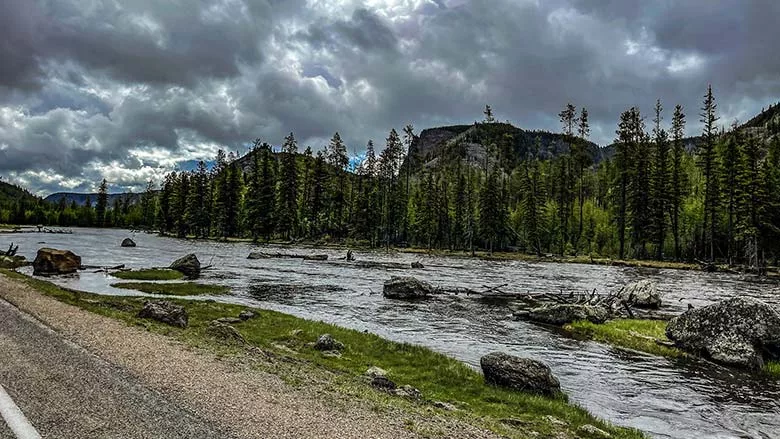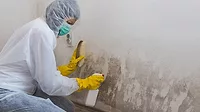Flooding at Yellowstone Creates Challenges for Restoration, Mold Remediation

Photo credit: Debora Vandor / iStock / Getty Images Plus via Getty Images
Dealing with disasters, both large and small, have been at the core of our businesses since the beginnings of the cleaning, restoration, and remediation industry. While many of us have had to face catastrophic events like hurricanes and other large storm events, we in Montana don’t think we need to worry much about such devastation. Sure, a few wildfires during the summer can be termed “catastrophic” and massive hail storms can keep thousands of local and out of state roofers busy, but normally, we feel pretty secure that a “national news” scale of emergency is unlikely.
Not anymore. Mother Nature created a perfect storm situation in the northwest Rocky Mountain region. As winter departed this spring, she gave the mountains of southern Montana and northern Wyoming a final blanket of snow dozens of feet deep in some places and as much as 200% of our normal amount. Warmer weather had begun to melt the snow, then it rained. That was all the headwaters to the Missouri River needed to swell river banks to overflowing taking out everything in its path.
The record-breaking amount of snowfall received in April and May coupled with June’s unusually heavy and frequent rainstorms produced what some call a 500-year flooding event as water cascaded down the mountain valleys feeding the Yellowstone River Basin.
By early June, Yellowstone National Park, famous for geysers and wide-open spaces, closed all of it five entrances to the park for the first time in 34 years. This was the summer they were expecting record numbers of visitors. Millions of guests were suddenly locked out.
“Many sections of highways in these drainages are completely gone and it is probable that road sections in northern Yellowstone will not reopen this season due to the time required for repairs.”
According to park officials, “Many sections of highways in these drainages are completely gone and it is probable that road sections in northern Yellowstone will not reopen this season due to the time required for repairs.” Raging floodwaters were reshaping the valleys and tearing out bridges and huge parts of the roadway every passing hour.
Homes built close to the rivers were threatened, with many of them becoming either partially or completely torn from their foundations and destroyed while floating down the river. The lucky ones still suffered heavy damage from filled to the brim basements to water rushing under their homes.
With thousands of structures affected, restorers are making lists and doing their best to get to the victims as quickly as possible to salvage what they can. Remediators are gearing up too because only a small number of properties will receive benefit of proper flood mitigation techniques. The bulk of the damage won’t be addressed for weeks to come, making these properties vulnerable to heavy mold growth and structural degradation.
All of the drainages coming out of the national park region suffered from the flood damage. The Stillwater River, which feeds into the Yellowstone River, has produced many jobs for Billings area restorers. While the Billings water treatment plant was shut down for a couple of days waiting for the Yellowstone’s flood water to subside after submerging the plant’s entire water intake area.
The damage affected many riverfront homes and ranches as the river’s flow exceeded 6,060 cfs — about four times the normal rate — floating away boxes of stored memories, family history and precious photos that will never be recovered. Some lost pets and some lost livestock.
As all restorers know, when faced with monumental challenges like these, we rise to the occasion. In doing so, we suffer some of the same problems the victims do. Clients and contractors alike are faced with severely limited access to these areas. Our most remote job so far is a five-hour round trip from Billings due to the circuitous route, pilot cars and gravel roads we now need to take just to get to the jobsite.
Rock Creek, running through Red Lodge, Montana, simply could not handle the huge volume of water coming down the mountain slopes above. Fear of Mystic Lake bursting led to opening the flood gate, making the situation worse. Still frozen ground unable to soak up the melt.
Standing flood water in the plains and the southland tends to get things soaking wet, but doesn’t move things around. When high elevation mountain rivers overflow, the tremendous force of the water carries trees and even rocks and sand with it as the debris is relocated by the water. One of our clients reported she could hear the huge boulders in the river rolling downstream and crashing into each other. She said it was quite eerie and very loud.
By early July, our flood calls are beginning to taper off as odor removal complaints are increasing, obviously due to the formation of mold and the amplification of bacteria, and rotting fish.
As the snow melt and heavy rains filled the rivers and streams to overflowing their banks, the Stillwater Valley residents knew there was a possibility of damaging or even taking out the nearly 100-year-old Mystic Lake power plant. Managers were closely monitoring the lake level as they released the maximum water possible to relieve pressure on the dam. This action added to the fears of those of us downstream that our own properties could be completely wiped out.
As with any emergency, our priorities change dramatically when faced with the risk of total devastation of your property, livestock and loved ones. We in the cleaning and restoration industry expect disasters to happen and are ready for them. Whether it be wildfires, flooding, hurricanes, we stand ready to deal with any eventuality through proper training and asset investment.Looking for a reprint of this article?
From high-res PDFs to custom plaques, order your copy today!




